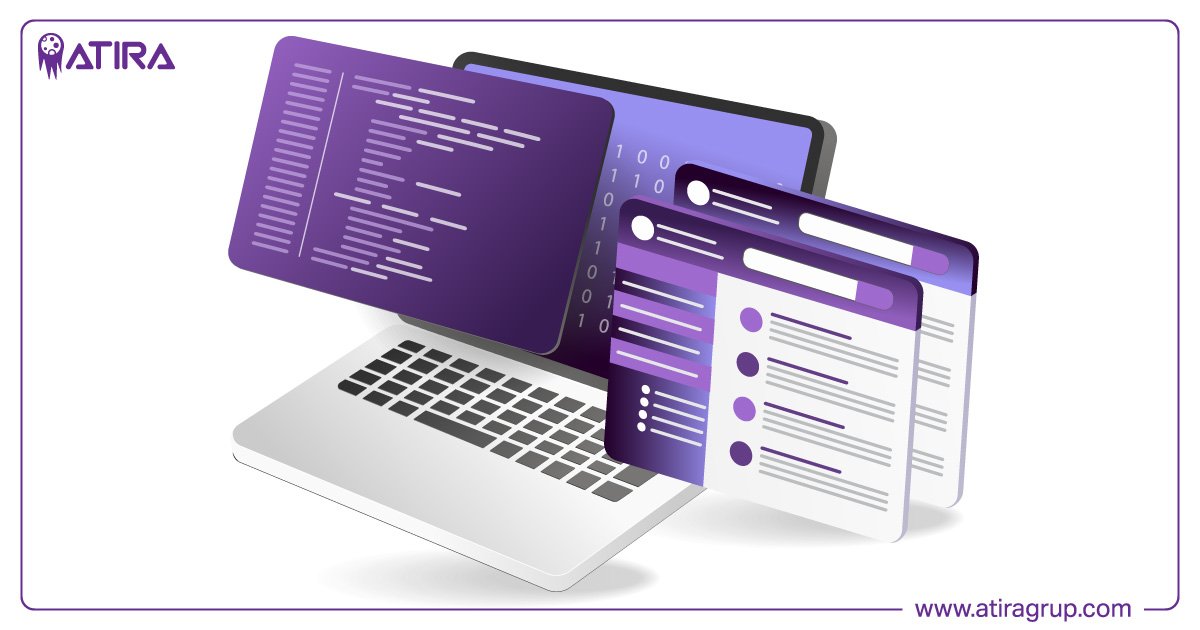In the globalized digital landscape, businesses increasingly target users in different countries and languages, making multilingual and multiregional SEO essential for success. Local SEO tools can be particularly useful for optimizing multilingual and multiregional websites.
Table of Contents
Optimizing a website for multiple languages and regions can boost visibility, engage local audiences, and improve search engine results.
However, multilingual SEO and multiregional SEO require a carefully planned strategy to ensure that search engines understand and deliver the right content to the right audience.
This comprehensive guide covers the critical components of multilingual and multiregional SEO, including URL structures, language versions, geotargeting, and keyword research.
What is Multilingual and Multiregional SEO?
Multilingual SEO refers to the process of optimizing a website for users who speak different languages, ensuring that the website is accessible and understandable to global audiences.
This involves creating multiple language versions of the website and optimizing each version to rank well in search engines for that specific language, including the local language of the target audience.
Multiregional SEO, on the other hand, focuses on optimizing a website for users in different geographic regions. It ensures that the website provides region-specific content to audiences in different countries or areas.
This requires targeting different regions with relevant, localized content to improve the website’s performance in local search results.
Together, multilingual and multiregional SEO help website owners target both multiple languages and multiple geographic regions, enhancing the visibility of their content across different languages and areas.

Why Multilingual and Multiregional SEO Matters
When businesses expand globally, they face the challenge of reaching audiences in different languages and regions.
Creating multilingual websites and multiregional websites helps brands cater to local audiences and improves the user experience by delivering content in the appropriate language version or region-specific format.
Search engines, especially Google, prioritize providing users with relevant and localized search results. By implementing the right SEO strategies, websites can effectively engage users across different countries and languages, leading to higher traffic, better engagement, and improved conversions. Understanding search trends in different regions is crucial for tailoring content to meet the specific needs and preferences of diverse audiences.
Key Benefits of Multilingual and Multiregional SEO:
- Reach a Global Audience: By optimizing for multiple languages and regions, businesses can attract visitors from all over the world, expanding their reach and influence.
- Improve Search Engine Rankings: Multilingual SEO improves your website’s visibility in search engine results pages (SERPs) for specific languages and regions, increasing the chances of being found by the target audience.
- Boost User Engagement: Offering content in the local language or regional context improves user experience, leading to better engagement and higher conversion rates from the local audience.
- Gain Competitive Advantage: Many websites fail to optimize for different languages and regions. Implementing a multilingual and multiregional strategy gives businesses a competitive edge over their competitors.
Identifying Your Target Audience
Identifying your target audience is a crucial step in multilingual and multiregional SEO. It involves understanding the demographics, preferences, and behaviors of your potential customers in different regions and languages.

To identify your target audience, you can use tools such as Google Analytics, social media analytics, and market research reports. Analyze your website’s traffic, engagement, and conversion rates to determine which regions and languages are most relevant to your business.
Consider the following factors when identifying your target audience:
- Language: Which languages do your target audience speak?
- Region: Which regions do your target audience come from?
- Culture: What are the cultural nuances and preferences of your target audience?
- Behavior: How do your target audience behave online?
- Preferences: What are the preferences of your target audience in terms of content, products, and services?
By understanding your target audience, you can create content and optimize your website to meet their needs and preferences, increasing the chances of attracting and engaging with them.
Key Considerations for Multilingual and Multiregional SEO
To ensure your multilingual and multiregional SEO strategy is effective, consider these core elements:
Page load speed is also crucial for multilingual and multiregional websites.
1. Choosing the Right URL Structure
A key aspect of multilingual and multiregional SEO is creating a clear and consistent URL structure for different language versions and regions of your website.
A well-organized URL structure helps search engines understand the different language versions and geographic targeting of your website. The three most common URL structures are:
a. Subdomains
Subdomains are often used for different language or regional versions of a website. For example, `es.example.com` could represent the Spanish version of a website.
Subdomains are seen as separate websites by search engines, which means each subdomain needs to be optimized individually.
b. Subdirectories
Subdirectories (or subfolders) allow you to place different language or regional versions of a website within the same domain. For example, `example.com/es/` for Spanish.
Subdirectories are part of the same website, and search engines treat them as part of the same domain, making optimization more streamlined.
c. Country-Code Top-Level Domains (ccTLDs)
Country-code top-level domains (ccTLDs) use domain extensions that are specific to countries, such as `.fr` for France or `.de` for Germany. ccTLDs are the best option for targeting specific countries because search engines automatically associate them with the relevant region. However, managing multiple domains can be more resource-intensive.
2. Choosing the Right Domain Structure
Choosing the right domain structure is essential for multilingual and multiregional SEO. A well-structured domain can help search engines understand the language and region targeting of your website, improving your visibility in search results. Here are some options for domain structures:
- Country code top-level domains (ccTLDs): These are domain extensions specific to a country, such as .de for Germany or .fr for France.
- Generic top-level domains (gTLDs): These are domain extensions that are not specific to a country, such as .com or .org.
- Subdomains: These are subdirectories of a main domain, such as de.example.com or fr.example.com.
- Subdirectories: These are subdirectories of a main domain, such as example.com/de or example.com/fr.
When choosing a domain structure, consider the following factors:
- Language: Which languages do you want to target?
- Region: Which regions do you want to target?
- Branding: How will your domain structure affect your brand identity?
- Technical: How will your domain structure affect your website’s technical performance?
2. Language Tags (Hreflang)
Using the hreflang attribute is crucial for indicating to search engines which language version of a page should be shown to users in specific countries or regions.
The hreflang tag helps Google and other search engines understand which language and country version of the website to display for specific search queries.
For example:
<link rel="alternate" href="[https://example.com/fr/](https://example.com/fr/)" hreflang="fr">
<link rel="alternate" href="[https://example.com/en/](https://example.com/en/)" hreflang="en">If your website offers the same content in multiple languages, implementing hreflang correctly ensures that search engines show the correct version of your content to users based on their language preferences and location. Additionally, optimizing meta descriptions for different language versions is important to improve visibility and click-through rates in various regions.
3. Conducting Keyword Research for Multiple Languages and Regions
Keyword research is a fundamental aspect of SEO, but when targeting multiple languages and regions, you must conduct keyword research tailored to each target country and language version.
This ensures that your content aligns with the search habits and preferences of your audience in different regions.
a. Language-Specific Keyword Research
When conducting keyword research for a multilingual website, avoid simply translating keywords from one language to another.
Instead, use tools like Google Keyword Planner and local SEO tools to find relevant keywords in the local language that users in that market are searching for. Keep in mind that direct translations of keywords may not always match the local search trends.
b. Region-Specific Keyword Research
For multiregional SEO, your keyword strategy should focus on search trends specific to each region. A keyword that performs well in one region may not work as effectively in another. Research search trends and user behavior in each target region to tailor your SEO strategy accordingly.
4. Optimizing Website Content for Multilingual and Multiregional SEO
Your website content must be optimized for both multilingual SEO and multiregional SEO. This involves translating content into the correct language and localizing it to reflect cultural, regional, and language differences. Here’s how to optimize content for multilingual and multiregional SEO:
a. Language Optimization
When implementing multilingual SEO, ensure that your content is translated professionally, rather than relying on Google Translate or other automatic translation tools, as these often produce awkward or inaccurate translations.
Additionally, ensure that your meta descriptions, titles, and alt text are also translated for the correct language version of your website.
b. Regional Optimization
For multiregional SEO, make sure your content is tailored to the specific region you are targeting. This can include regional phrases, localized measurements (e.g., currency, units), and local references.
Customizing content for each target region helps engage the local audience and increases relevance in search engines for that region.

5. Technical SEO Considerations for Multilingual and Multiregional SEO
a. Server Location and Content Delivery
While search engines are increasingly focused on content rather than server location, hosting your website on servers closer to your target regions can still help with page load speed. Additionally, using a Content Delivery Network (CDN) ensures that your content is distributed globally and delivered quickly to users in different geographic regions.
b. Handling Duplicate Content
One of the challenges of multilingual websites is dealing with duplicate content. If the same content appears across multiple language or regional versions of your website, search engines may penalize the website for duplicate content.
Using hreflang tags and clearly specifying the appropriate language version for each page will prevent this issue.
c. Consistent URL Structure
A clear and consistent URL structure helps search engines and users understand the different language and region versions of your website. Choose a URL structure (subdomains, subdirectories, or ccTLDs) that is easy to navigate and implement consistently across the site.
6. Tracking and Monitoring Multilingual and Multiregional SEO Performance
Monitoring your website’s performance in different regions and languages is crucial to ensuring the success of your multilingual and multiregional SEO strategy. Use Google Analytics and Google Search Console to track how your website is performing for different language versions and regions.
a. Google Search Console
Using Google Search Console, you can monitor the performance of your multilingual and multiregional website by setting up geotargeting and analyzing the performance of each language version and region-specific page. You can track search queries and click-through rates (CTR) for each target region to identify where you need to optimize further.
b. Google Analytics
With Google Analytics, you can gain insights into your website’s traffic sources, user behavior, and how users from different regions interact with your website. Use this data to tailor your content and improve your SEO strategies for each region.
Creating Locally Relevant Content
Creating locally relevant content is essential for multilingual and multiregional SEO. Locally relevant content is content that is tailored to the needs and preferences of a specific region or language. Here are some tips for creating locally relevant content:
- Use local keywords: Use keywords that are relevant to your target audience in different regions and languages.
- Use local language: Use the language that is most relevant to your target audience in different regions.
- Use local culture: Use cultural nuances and references that are relevant to your target audience in different regions.
- Use local examples: Use examples and case studies that are relevant to your target audience in different regions.
By creating locally relevant content, you can increase the chances of attracting and engaging with your target audience in different regions and languages.

Common Challenges in Implementing Multilingual and Multiregional SEO
While multilingual and multiregional SEO offers numerous benefits, there are several challenges that website owners may face when implementing these strategies, such as dealing with duplicate content:
1. Managing Multiple Versions of the Website
Maintaining and updating content across different language and region versions of a website can be time-consuming. It’s important to have a robust content management system (CMS) that supports multiple languages and regions.
2. Accurate Translations
Poor translations can negatively impact your SEO efforts and user experience. Using tools like Google Translate, along with professional translation services and localizing content for each market, ensures that your message resonates with the local audience.
3. Geotargeting Issues
Setting up accurate geotargeting in Google Webmaster Tools and using hreflang tags correctly can be complex, especially when targeting multiple countries that speak the same language (e.g., English-speaking regions).
4. Duplicate Content
As mentioned earlier, duplicate content can be a concern for multilingual websites. Search engines may penalize your website if they find identical content across multiple pages. Properly using hreflang and canonical tags can help resolve this issue.
Understanding the Role of Server Location in Multilingual and Multiregional SEO
When implementing a multilingual and multiregional SEO strategy, it’s essential to consider the impact of server location.
Although search engines like Google have become highly sophisticated in delivering region-specific content, the physical location of your server can still affect page load speeds and overall user experience, especially in local search results. Using local SEO tools can help optimize server location for better performance.
If your website is hosted on a server far from your target market, it may take longer for users in that region to access your content. For example, if your server is located in Europe but you are targeting users in Asia, this could negatively affect the website’s performance.
A distributed content delivery network (CDN) can help by hosting your content on servers closer to your target regions, ensuring faster delivery and better performance.
In some cases, server location can also influence search engine results. While not as significant as content relevance, server location is a factor that search engines might consider when determining which version of your website to show in a particular region.
However, by using geotargeting through tools like Google Search Console, you can ensure that your target country receives the correct version of your site, even if your server is located elsewhere.

The Importance of Clear Geotargeting for Multilingual and Multiregional SEO
Geotargeting is an essential aspect of multiregional SEO strategies. It allows website owners to specify the target region for different parts of their website, ensuring that users in specific geographic locations are served the most relevant content.
Google and other search engines use geotargeting signals to deliver localized content to users based on their location.
Google Search Console and Geotargeting
One of the most effective tools for geotargeting is Google Search Console. This tool lets you set a preferred website version for specific regions or countries.
By setting up geotargeting in Google Search Console, you can specify which language version or region-specific content should be shown to users in different geographic regions.
For example, suppose you have a website targeting the UK and Australia. In that case, you can use Google Search Console to indicate that the .uk version of your website is meant for users in the United Kingdom, and the .au version is intended for users in Australia.
This ensures that users in each region are shown the most relevant language and region-specific content.
Using Metadata for Multilingual and Multiregional SEO
Optimizing your meta descriptions, title tags, and website elements for multiple languages and regions is crucial for improving your search engine results.
Meta descriptions are critical as they summarize the page content in search engine results pages (SERPs).
Write unique and optimized meta descriptions that reflect the page’s content and keywords for each language and region-specific page.
Please don’t use automatic translation tools to generate these descriptions, as they often produce inaccurate or awkward translations.
Conclusion: Implementing a Successful Multilingual and Multiregional SEO Strategy
Creating and maintaining a successful multilingual and multiregional SEO strategy requires careful planning and ongoing optimization.
By choosing the right URL structure, optimizing content for multiple languages and regions, implementing technical SEO best practices, and monitoring performance through Google Analytics and Google Search Console, businesses can successfully expand their global reach and engage local audiences.
Whether you are targeting a single language version for a specific region or aiming to reach users across multiple countries, multilingual and multiregional SEO is a powerful tool to drive traffic, improve search engine rankings, and ultimately grow your business globally.

FAQ
1. What is the difference between multilingual SEO and multiregional SEO?
Multilingual SEO optimizes a website to be accessible and relevant for users in different languages. It involves creating multiple language versions of the website and ensuring the content is optimized for search engines in each language.
On the other hand, Multiregional SEO targets different geographic regions, delivering region-specific content and improving visibility in local search engine results. It’s about optimizing for different countries or areas, regardless of whether they speak the same or other languages.
2. What URL structure should I use for multilingual or multiregional websites?
There are three main options for URL structures:
Subdomains (e.g., fr.example.com): Search engines treat subdomains as separate websites, requiring individual SEO efforts.
Subdirectories (e.g., example.com/fr/): Easier to manage since they are part of the same website and inherit SEO authority from the main domain.
Country-Code Top-Level Domains (ccTLDs) (e.g., example.fr): The strongest signal for geotargeting, but more challenging to manage multiple separate domains.
Could you choose a structure that aligns with your resources, target audience, and search engine strategy?
3. How do I avoid duplicate content issues in multilingual and multiregional SEO?
To avoid duplicate content issues, use the hreflang attribute to tell search engines which language or region-specific page version should be shown to users. This helps Google understand that the same content is being used in different languages or regions and ensures that the correct page is displayed to users. Also, could you consider creating unique and localized content for each area or language?
4. Can I use automatic translation tools like Google Translate for multilingual SEO?
While Google Translate and other automatic translation tools can be helpful in quickly translating content, they are recommended for something other than multilingual SEO. Automatic translations can produce inaccurate or awkward results that harm the user experience and SEO performance. It’s best to use professional human translation services to ensure your content is accurate and culturally appropriate for each target language.
5. How do I track the performance of my multilingual and multiregional SEO strategy?
Use tools like Google Search Console and Google Analytics to monitor the performance of your website’s various language versions and regional pages. Google Search Console allows you to set geotargeting preferences and track each version’s performance in local search results. Google Analytics provides insights into user behavior, traffic sources, and region conversion rates. This data can help you refine your SEO strategies for each market.
Read More About:


